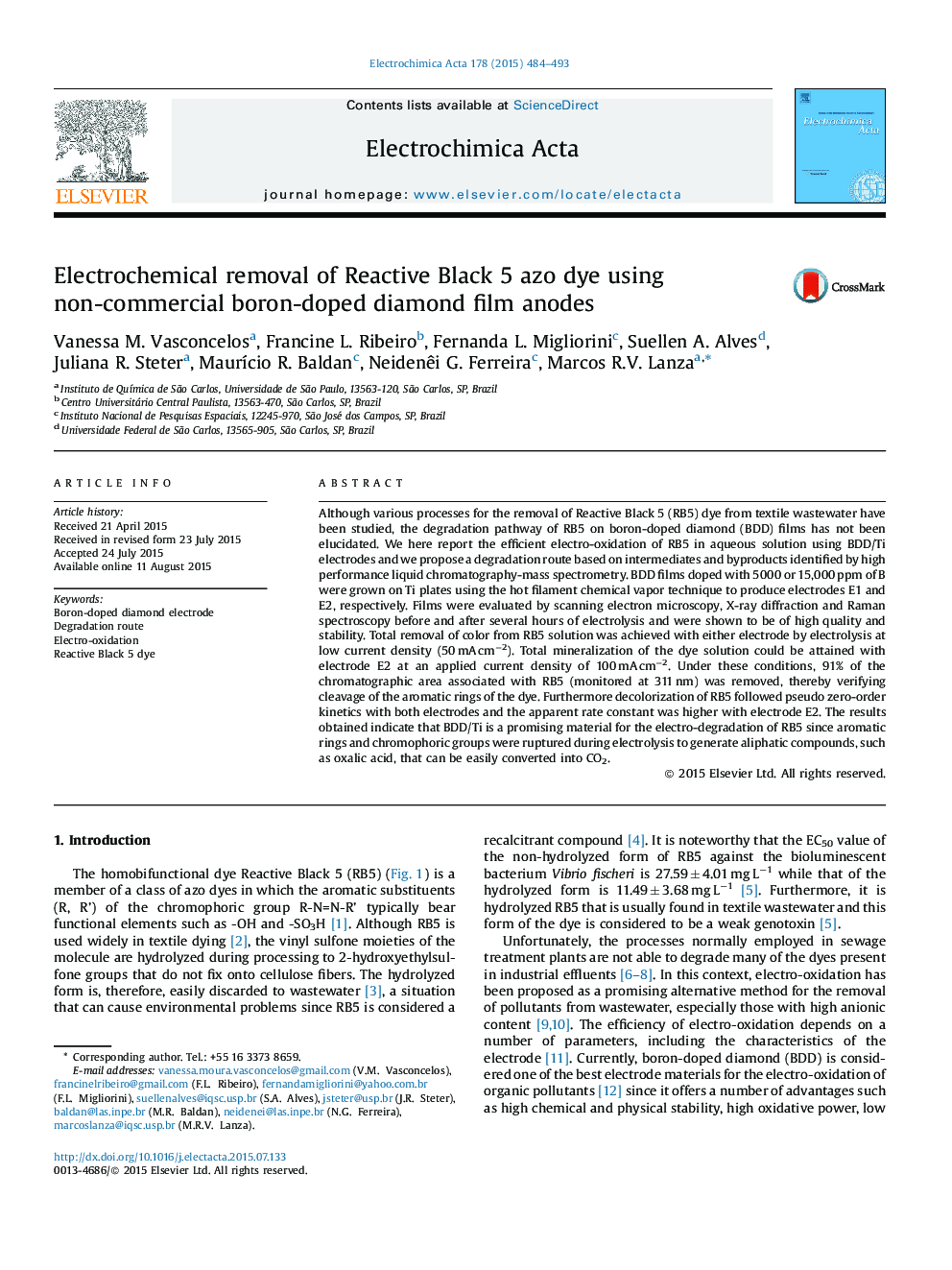| Article ID | Journal | Published Year | Pages | File Type |
|---|---|---|---|---|
| 183708 | Electrochimica Acta | 2015 | 10 Pages |
•Electrodegradation of Reactive Black 5 (RB5) dye was achieved using a BDD/Ti anode.•Total decolorization and mineralization could be attained using a higher doped anode..•Effect on RB5 degradation of applied current density exceeded those of doping level.•A route of degradation of RB5 at a BDD/Ti anode is proposed based on HPLC–MS analyses.
Although various processes for the removal of Reactive Black 5 (RB5) dye from textile wastewater have been studied, the degradation pathway of RB5 on boron-doped diamond (BDD) films has not been elucidated. We here report the efficient electro-oxidation of RB5 in aqueous solution using BDD/Ti electrodes and we propose a degradation route based on intermediates and byproducts identified by high performance liquid chromatography-mass spectrometry. BDD films doped with 5000 or 15,000 ppm of B were grown on Ti plates using the hot filament chemical vapor technique to produce electrodes E1 and E2, respectively. Films were evaluated by scanning electron microscopy, X-ray diffraction and Raman spectroscopy before and after several hours of electrolysis and were shown to be of high quality and stability. Total removal of color from RB5 solution was achieved with either electrode by electrolysis at low current density (50 mA cm−2). Total mineralization of the dye solution could be attained with electrode E2 at an applied current density of 100 mA cm−2. Under these conditions, 91% of the chromatographic area associated with RB5 (monitored at 311 nm) was removed, thereby verifying cleavage of the aromatic rings of the dye. Furthermore decolorization of RB5 followed pseudo zero-order kinetics with both electrodes and the apparent rate constant was higher with electrode E2. The results obtained indicate that BDD/Ti is a promising material for the electro-degradation of RB5 since aromatic rings and chromophoric groups were ruptured during electrolysis to generate aliphatic compounds, such as oxalic acid, that can be easily converted into CO2.
Graphical abstractFigure optionsDownload full-size imageDownload as PowerPoint slide
